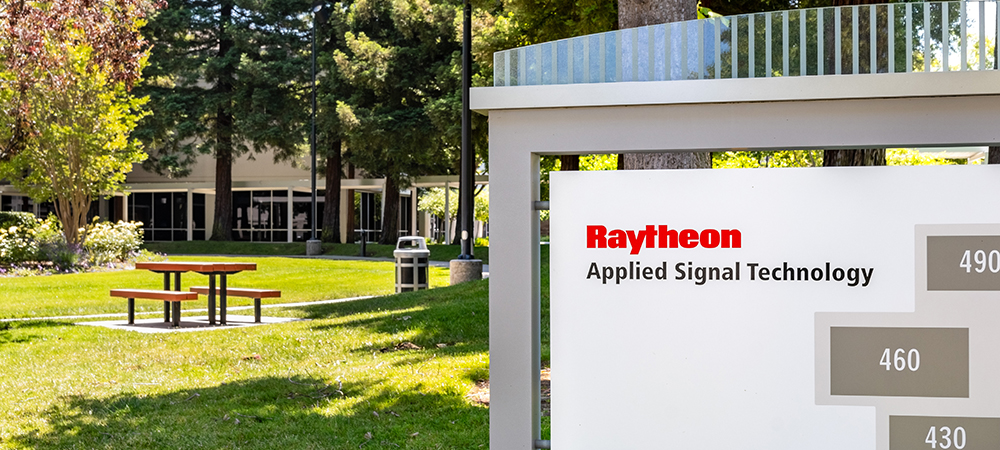Jake Ullrich, Surveillance and Targeting Systems Engineering Director, Raytheon Technologies, talks Intelligent CIO through a groundbreaking development in ‘seeing the unseen’.
Combat search-and-rescue missions pose unique challenges in the jungle and at sea, environments that can catch even the most experienced aircrews off guard and requiring innovative solutions to improve detection and identification capabilities.
Raytheon Technologies has developed a groundbreaking hyperspectral technology system called RAIVEN to address these challenges, revolutionizing the way aircrews detect and identify threats, obstacles and targets in real-time.
By combining Artificial Intelligence, electro-optical imaging, hyperspectral imaging and LiDAR, Raytheon pitches RAIVEN as providing an unprecedented intelligent-sensing capability capable of even detecting the chemical signatures of human skin and hair.
“You can imagine the value of such a capability when trying to find a downed aircrew member in a forest or sailor who has gone overboard at sea,” said Jake Ullrich, Surveillance and Targeting Systems Engineering Director, Raytheon Technologies.
“RAIVEN informs aircrews, ‘There’s something here. Here’s what I think it is or here’s what I know it is.’ It gives aircrews more time to make decisions,” he said. “For aircrews on combat missions, it extends their range, provides a clearer battlespace picture, and offers an intelligent way to process that data. That’s what RAIVEN brings to the table.”
With RAIVEN, pilots can see up to five times farther and clearer than before, compared to traditional electro-optical imaging systems. This means aircrews can spot potential threats from a safe distance and keep their platforms out of harm’s way.
RAIVEN can automatically detect and identify threats, reducing the workload for operators and accelerating the decision-making process.
Those operators can silently and covertly observe their surroundings.
The system’s intriguing capability lies in its ability to analyze and identify chemical signatures of various materials including gases, metals, vegetation and many others.
Its hyperspectral technology allows it to detect targets or objects that were previously invisible to the human eye or other conventional imaging technologies.
By capturing the wavelengths of light emitted by materials and objects, RAIVEN’s hyperspectral sensors can discern even the slightest changes in the chemical composition of the environment, providing an entirely new level of situational awareness.
“We started with the word ‘raven’ for the bird and added ‘AI’ in the middle. Ravens are intelligent hunters, constantly observing their prey,” Ullrich said.
The RAIVEN turret’s hyperspectral imaging system creates a unique ‘fingerprint’ for different materials based on how they reflect and absorb light.
This enables RAIVEN to detect and analyze the chemical composition of its surroundings. The onboard AI algorithms process this data in real-time ‘at the Edge’, providing immediate results to the aircrews.
“The computing power of RAIVEN allows for onboard data processing, so aircrews no longer have to send data elsewhere for post-processing,” Ullrich said. “They can make prompt decisions based on RAIVEN’s immediate detections.”
Hyperspectral technology is particularly valuable for military aircrews as it can rapidly and accurately identify objects on the ground or in the air, even in challenging lighting or weather conditions. It can detect various types of vegetation, manmade materials like metal or plastic, and even human skin or hair.
In addition to hyperspectral technology, RAIVEN incorporates LiDAR, or Light Detection and Ranging, to further enhance situational awareness for aircrews. LiDAR uses laser pulses to measure distances to objects, creating a detailed 3D map of the environment.
The integration of LiDAR into RAIVEN provides aircrews with an additional layer of safety during missions, reducing the risk of accidents or collisions. It helps in detecting and avoiding obstacles such as wires, buildings, or trees, which is crucial during low-level flight or in complex terrains.
By swiftly analyzing and processing LiDAR data, RAIVEN’s AI algorithms identify potential threats and present them to the operator, reducing their workload and allowing them to focus on critical tasks.
While the company has modernized the sensors for traditional full-motion video, it has also upgraded them to 4K resolution. By utilizing smaller pixels and larger apertures, the resolution has been improved, enabling aircrews to discern objects at even greater distances.
“We’ve approached every aspect of the system holistically to enhance it, while also adding more capability under the hood. We’ve been saying that we’ve included a little bit of everything but the kitchen sink; it’s a real marvel of packaging,” Ullrich said.
RAIVEN, specifically the RT-1000 or RAIVEN Turret 1000, is designed for the US Army’s Future Vertical Lift variations of Future Long-Range Assault Aircraft and Future Attack Reconnaissance Aircraft, and it is scheduled for its first flight in 2024.
However, the architecture of RAIVEN allows for scalability, making it adaptable to various platform installations and mission requirements.
“The beauty of this architecture lies in its versatility. We can employ the same electronics, software, and sensors in different configurations, allowing us to plug-and-play other sensors as needed,” said Ullrich.
“We can scale up or down based on the specific platform and mission requirements. The team has truly embraced the open systems architecture that our customers demand.”
With its hyperspectral and LiDAR capabilities, combined with powerful AI algorithms, RAIVEN provides operators with enhanced situational awareness, real-time data processing, and the ability to detect and identify objects that were previously invisible or simply out of range. Its versatility and scalability make it an asset across a range of military platforms.
“RAIVEN will empower our aircrews with unprecedented capabilities, ensuring they have the information they need to make critical decisions in today’s complex battlespace,” Ullrich said.
Click below to share this article

